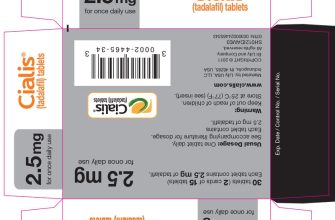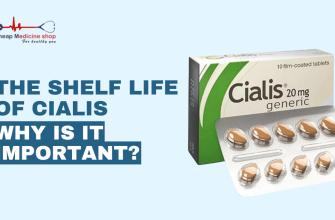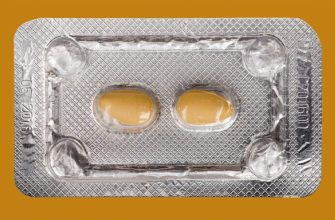Begin with the lowest effective dose: typically, 2 mg of ergotamine sublingually. This allows your body to gauge its response, minimizing potential side effects.
Repeat the dose after 30 minutes if needed, but do not exceed 6 mg within a 24-hour period. Exceeding this amount increases the risk of serious side effects. Always adhere to your doctor’s prescribed regimen; this guideline serves as general information and should not replace professional medical advice.
Observe for side effects such as nausea, vomiting, or tingling in the extremities. If these occur, discontinue use and contact your healthcare provider immediately. Individual responses to ergotamine vary considerably; therefore, close monitoring is recommended.
Remember: Ergotamine sublingual tablets should dissolve under the tongue; do not swallow them whole. Proper administration is vital for absorption and efficacy. Store medication as directed on the label to maintain its potency.
Disclaimer: This information is for general knowledge and does not constitute medical advice. Consult your physician or pharmacist before using ergotamine or any medication.
- Ergotamine Sublingual Dosage: A Detailed Guide
- Frequency and Timing
- Individual Needs
- Precautions and Interactions
- Storage and Disposal
- Seeking Medical Advice
- Understanding Ergotamine Sublingual Tablets
- Recommended Starting Dosage and Frequency
- Frequency Limits
- Dosage Adjustment
- Adjusting Dosage Based on Response
- Managing Migraine Relief
- Frequency and Duration of Treatment
- Monitoring Side Effects
- Individualized Approach
- Precautions
- Maximum Daily and Weekly Dosage Limits
- Potential Side Effects and Precautions
- Interactions with Other Medications
- Specific Medications to Avoid
- When to Consult a Doctor
Ergotamine Sublingual Dosage: A Detailed Guide
Always follow your doctor’s prescription. Typical starting dosages range from 2 to 4 mg of ergotamine tartrate. The maximum recommended daily dose is generally 6 mg. You should not exceed this amount.
Frequency and Timing
Administer the medication as directed. Usually, this means taking a dose at the onset of a migraine, or as soon as possible after the symptoms start. Some patients might require additional doses, but only as prescribed by their physician. Never exceed the prescribed maximum daily dosage.
Individual Needs
Dosage adjustments depend on individual responses and tolerance levels. Your doctor will carefully monitor your progress and may adjust the dosage accordingly. Report any side effects immediately. Remember that ergotamine’s effectiveness can vary between individuals.
Precautions and Interactions
Ergotamine interacts with certain medications. Disclose all prescription and over-the-counter medications to your doctor before using ergotamine sublingually. Inform them about any existing health conditions, particularly cardiovascular issues. Pregnancy and breastfeeding are also important considerations.
Storage and Disposal
Store ergotamine sublingual tablets according to instructions on the label. Typically this involves keeping them in a cool, dry place, away from direct sunlight and moisture. Dispose of unused medication properly, following your pharmacist’s guidance or local regulations.
Seeking Medical Advice
This information does not replace medical advice. Consult your doctor or pharmacist for personalized guidance on ergotamine sublingual dosage and management. They can answer specific questions and address individual concerns. Always prioritize medical professional opinion.
Understanding Ergotamine Sublingual Tablets
Ergotamine sublingual tablets offer a rapid delivery method for migraine relief. They dissolve under your tongue, allowing the medication to enter your bloodstream quickly.
Dosage: Always follow your doctor’s prescribed dosage. Typical dosages range from 1 to 2 mg, administered one to two tablets at the onset of a migraine. Never exceed the recommended dose.
- Frequency: You may take another dose after 30 minutes if needed. However, the maximum daily dose is typically limited to 6 mg. Exceeding this can lead to adverse effects.
- Timing: Take the tablets at the first sign of a migraine for optimal results.
Administration: Place the tablet under your tongue and allow it to dissolve completely. Avoid swallowing it whole; this will delay absorption.
Potential Side Effects: Common side effects include nausea, vomiting, dizziness, and tingling. Rare but serious side effects include severe hypertension and ergotism. Seek immediate medical attention if you experience any serious adverse reactions.
- Nausea and Vomiting: These are relatively common. Consider taking the medication with food or a small amount of liquid.
- Dizziness: Avoid driving or operating machinery after taking ergotamine.
- Tingling: This usually resolves on its own.
Precautions: Ergotamine is not suitable for everyone. Inform your doctor about your medical history, including any heart conditions, liver or kidney disease, or peripheral vascular disease, before using this medication.
Drug Interactions: Ergotamine may interact with several medications. Discuss all medications you are taking with your doctor or pharmacist to prevent potential interactions.
Storage: Store your ergotamine tablets in a cool, dry place away from direct sunlight and moisture. Keep them out of reach of children.
Disclaimer: This information is for educational purposes only and should not be considered medical advice. Always consult your doctor or pharmacist for personalized guidance on using ergotamine sublingual tablets.
Recommended Starting Dosage and Frequency
Begin with a single 2 mg sublingual tablet of ergotamine. If needed, you may take a second tablet after 30 minutes. However, do not exceed a total of 6 mg within 24 hours.
Frequency Limits
Avoid taking ergotamine more than twice weekly to prevent the risk of side effects. Consistent overuse can lead to medication overuse headache. Always consult your doctor before increasing dosage or frequency.
Dosage Adjustment
If you experience inadequate relief after taking the recommended dose, consult your physician. They can assess your situation and determine if a different migraine treatment or a dosage adjustment is appropriate. Never alter the dosage without professional guidance.
Adjusting Dosage Based on Response
Start with the lowest effective dose, typically 2 mg sublingually. Observe your response carefully.
Managing Migraine Relief
- Significant Relief: If you experience substantial migraine relief, maintain the current dose. Avoid increasing unless symptoms return.
- Partial Relief: If you experience only partial relief, consider increasing the dose to a maximum of 4 mg after 30 minutes. Do not exceed this amount in a single dose.
- No Relief: If you experience no relief after one dose of 2 mg, consult your doctor immediately. Ergotamine may not be the right medication for you, and alternative treatments should be explored.
Frequency and Duration of Treatment
The total daily dose should not exceed 6 mg. Use only as needed for migraine attacks, not for preventative treatment. Avoid taking ergotamine for more than five days per week, and limit treatment duration to ten days per month. Excessive use can lead to serious side effects.
Monitoring Side Effects
- Mild Side Effects: Nausea, vomiting, or tingling in your extremities are common mild side effects. If these are manageable, continue with the current dosage. If they worsen, reduce the dose or consider alternative migraine treatment.
- Serious Side Effects: Severe chest pain, high blood pressure, or numbness/weakness in limbs require immediate medical attention. Discontinue ergotamine use and seek medical advice.
Individualized Approach
Dosage adjustments are highly individual. Your response to ergotamine depends on factors such as your age, overall health, and the severity of your migraines. Regularly consult with your physician to refine your treatment plan and ensure its safety and effectiveness.
Precautions
Always inform your doctor about other medications you are taking, particularly those that affect blood flow. Avoid using ergotamine if you have certain underlying medical conditions, such as peripheral vascular disease.
Maximum Daily and Weekly Dosage Limits
Do not exceed 6 mg of ergotamine tartrate sublingually in a 24-hour period. This applies to all ergotamine preparations used sublingually, regardless of the specific brand. Exceeding this limit increases the risk of serious side effects.
The maximum weekly dosage should not surpass 10 mg of ergotamine tartrate sublingually. Consistent adherence to this limit is paramount for minimizing potential adverse reactions. Always consult your doctor if you experience any concerning symptoms.
Remember, these are maximum limits. Your individual dosage might be significantly lower, depending on your specific needs and medical history. Your healthcare provider will determine the appropriate dosage for you.
Careful monitoring is vital. Report any side effects, such as nausea, vomiting, muscle pain, or tingling in your extremities, to your doctor immediately.
Always follow your doctor’s instructions precisely. Improper use can lead to severe health complications.
Potential Side Effects and Precautions
Ergotamine sublingual tablets can cause several side effects. Common ones include nausea, vomiting, and tingling in the fingers and toes. Less frequent, but still possible, are dizziness, weakness, and a feeling of tightness in the chest.
Before using ergotamine sublingually, inform your doctor about any pre-existing conditions. This is particularly important if you have heart disease, high blood pressure, liver or kidney problems, or peripheral vascular disease. Pregnancy and breastfeeding are also significant factors to discuss.
Avoid consuming alcohol while taking ergotamine, as it can increase the risk of side effects. Similarly, smoking and caffeine intake may exacerbate adverse reactions; consider reducing or eliminating these.
Overuse of ergotamine can lead to ergot toxicity, manifesting as severe muscle pain, numbness, cold extremities, and even gangrene. Strictly adhere to prescribed dosage and frequency; never exceed the recommended dose.
Consult your doctor immediately if you experience any unusual or severe side effects, such as chest pain, severe headache worsening after taking ergotamine, or significant changes in your vision.
This information should not replace professional medical advice. Always consult your doctor or pharmacist for guidance regarding the safe and effective use of ergotamine sublingual tablets. They can help you assess your individual risk and determine the most appropriate treatment plan.
Interactions with Other Medications
Ergotamine’s sublingual administration can interact negatively with several medications. Avoid concurrent use with other ergot alkaloids (like dihydroergotamine) to prevent additive vasoconstrictive effects, potentially leading to severe hypertension and other complications. This also applies to vasoconstricting medications like some decongestants.
Specific Medications to Avoid
Simultaneous use with beta-blockers may exacerbate hypertension risk. Similarly, combining ergotamine with certain antidepressants, particularly MAO inhibitors, can raise blood pressure and cause serious adverse reactions. Avoid using ergotamine with St. John’s Wort, as it can affect the metabolism of ergotamine and reduce its efficacy or increase adverse effects. Consult your doctor before taking ergotamine with any medication affecting the liver’s cytochrome P450 system, as drug interactions could alter ergotamine’s metabolism.
Triptans, frequently used for migraine treatment, should not be combined with ergotamine. Their concurrent use increases the risk of prolonged vasoconstriction and potentially serious cardiovascular complications. Always inform your physician about all current medications, including over-the-counter drugs and herbal supplements, before starting ergotamine sublingual treatment to minimize the risk of harmful interactions.
When to Consult a Doctor
Contact your doctor immediately if you experience chest pain, shortness of breath, or any signs of a heart attack after taking ergotamine sublingually. Severe or persistent headaches that don’t respond to ergotamine within a reasonable timeframe (typically, a few hours) also warrant immediate medical attention.
Seek medical advice if you notice any unusual side effects, such as nausea or vomiting lasting longer than a few hours, tingling sensations in your extremities, or vision changes. These could indicate a problem requiring prompt assessment.
Regularly monitor your blood pressure while using ergotamine. High blood pressure, a potential side effect, demands medical review and potential dosage adjustment. If you experience a significant increase in blood pressure, contact your doctor right away.
Ergotamine should be used cautiously with other medications. Always inform your doctor of all other drugs you take, including over-the-counter medications and supplements, to avoid harmful interactions. This is particularly crucial for blood thinners and certain antidepressants.
| Symptom | Action |
|---|---|
| Chest pain, shortness of breath | Seek immediate medical attention |
| Unresponsive headache after a few hours | Contact your doctor immediately |
| Persistent nausea, vomiting, tingling, vision changes | Consult your doctor |
| Significant blood pressure increase | Contact your doctor immediately |
| New or worsening medical condition | Inform your doctor |
If you have any concerns about ergotamine use, including potential drug interactions or appropriate dosage, schedule an appointment with your physician. Pregnant or breastfeeding women should specifically consult their doctor before using ergotamine.







